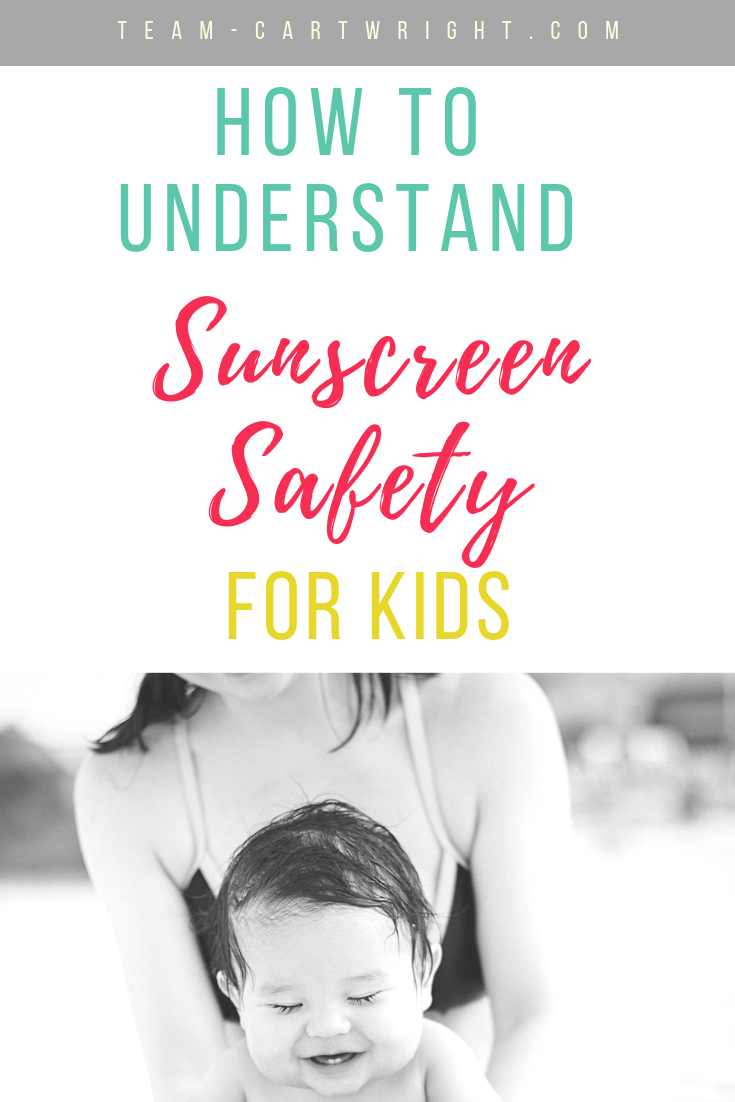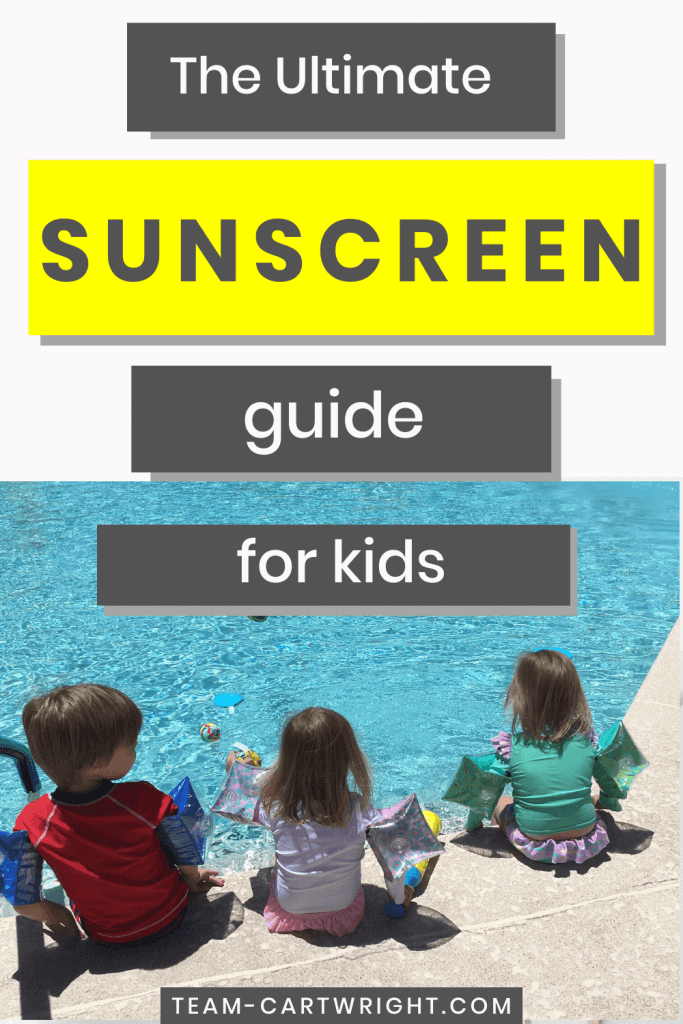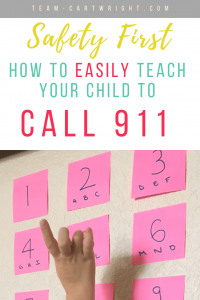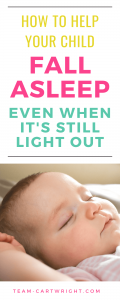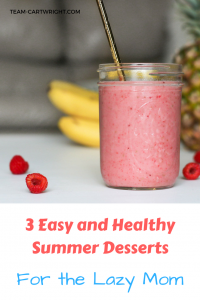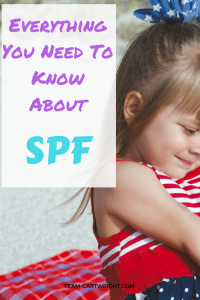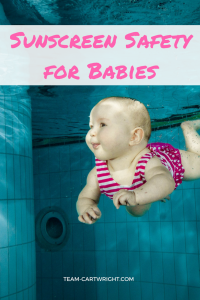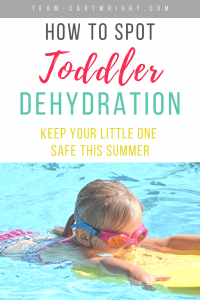Summer is almost here. Sunshine!! Yay!
Of course, being out in the sun means we need to protect that delicate, beautiful skin on our little ones. It can be a bit daunting to know the best recommendations for babies and young children.
Young babies especially can’t tell us if their skin is feeling too hot. They are often unable to move out of the sun if they feel uncomfortable. As a result, it is up to us to keep them sun safe.
Here are the basics of sun safety and sunscreen for babies and kids.
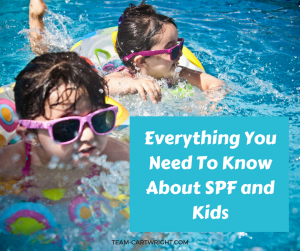
What's In This Post?
General Sun Protection Recommendations
Under six months old
The recommendation for babies under six months of age is to skip the sunscreen if you can help it.
Try to use clothing, shade, or just avoidance to prevent sunburns. Of course, this can be easier said than done if you live in a sunny area, or if you have other kids that need to get out and play.
In these cases, the American Academy of Pediatrics has said that using a little sunscreen is better than the baby getting a sunburn. (Yay for practicality coming through with this advice!)
When applying sunscreen to babies be sure to watch their eyes. Try to avoid putting it on places they suck on, like their hands. You don’t want them eating it.
Older babies and children
Shade, appropriate clothing, and avoiding the peak sunshine hours are recommended for older babies and children too.
Avoiding the sun is easier said than done, especially with little ones that need to get out and play! But if you can change up your outdoor times to be either in the morning or evening it will help with sun exposure.
Hats and sunglasses are helpful to keep eyes safe from the sun. (I know, this can be a big challenge with some children. Letting them pick out a hat or sunglasses they like can help.) Sunscreen is also strongly recommended anytime you are outside.
Sunscreen Specifics For Kids
What is SPF?
SPF stands for sun protection factor. Basically, that just means it tells you how much protection from sunburn it will give you. The number is the factor that tells you how strong it is.
For example, if you use a sunscreen labeled SPF 30, and you normally would burn in about 10 minutes in the sun you would be able to go 300 minutes without burning.
The current recommendation is to get a product with an SPF between 30 and 50. Once you get over 50 the actual percentage of protection barely increases. (SPF 50 offers protection against 98% of UV rays, while SPF 100 offers protection against 99%. That isn’t a huge increase.)
These products can cost more without actually protecting any better. Additionally, the higher SPF can give a false sense of security, making you think you don’t need to reapply as much.
How much should you apply?
The average adult is told to use an ounce of sunscreen. This ‘average person’ is assumed to be a 5’4″ adult weighing about 150 lbs. So it makes sense some adults would need more, and kids might need a little less.
An ounce is a good amount to use as a jumping off point. Keep in mind an ounce is the size of a shot glass. Pull one out and take a look. Many people don’t use as much as they should.
Most bottles of sunscreen contain 8 ounces of product, meaning you could sunscreen eight adults with a single bottle. If you have that one bottle of sunscreen that lasts all summer I’m sorry to tell you, but you are not putting enough on. Add a bit more.
If your sunscreen is clumping or separating it is time to toss it and get a new bottle. It can and does break down over time, and this is a clear sign it will not be as effective in protecting you.
Here is more to help you out this summer:
Spray or lotion?
Spray or lotion? Which is best?
The sprays are very convenient. We recently got one and I did like using it. It is was easier to just spray down a wiggly kid instead of having lotion in your hand, trying to rub it in with the other. and keep the babies from trying to eat the bottle. (That last one might be just me.)
The concern with sprays like this is, of course, the risk of inhalation. You don’t want to be protecting your lungs against sunburn. Have your child hold their breath while you spray it and look away.
The other concern with the spray is that you can’t always tell if you are getting complete coverage.
How often should you apply?
Protection from sunburn starts before you head out of the house! Aim to apply sunscreen 15-30 minutes before you go outside.
This is actually pretty easy to accomplish with little ones. Make the start of your heading out routine the sunscreen application step. By the time everyone has used the potty, gotten a diaper change, found their shoes, ignored your instructions for the hundredth time, etc. chances are enough time has passed.
Once outside you want to aim to reapply every two hours at least, more if you are swimming or getting particularly sweaty.
Yes, it is kind of annoying. But sunburns and increased risk of skin cancer are more annoying.
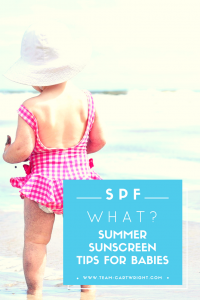
So what sunscreen should I get?
I’m not going to recommend a specific brand, as there are just too many out there to consider. In terms of active ingredients, you want to aim for a product with 10-15% zinc oxide or titanium dioxide for mineral coverage, or 3% avobenzone for chemical based products.
As I mentioned before SPF 30-50 is the range you want to aim for. You want to make sure it is a broad spectrum coverage to protect against UVA and UVB rays. (UVB tend to damage the outer layers of skin, while UVA attack the deeper layers.)
The Environmental Working Group has a guide to sunscreens that can help you pick out the right one for your needs.
Easily missed spots
It is easy to miss spots when applying sunscreen, especially on wiggly little ones! A few places that are easy to miss:
- Ears. Yep, the tops of the ears can burn.
- Back of the neck, even on girls with longer hair.
- Tops of the feet.
- Hands. This is especially important if you tend to wash your hands after you apply sunscreen.
- Backs of the legs.
- Scalp and part. It’s better for your baby to have greasy hair than a burned scalp.
Try to go a couple of inches up into your clothes, as they can shift while you are out. Move shoulder straps aside and get the whole area as well.
This is just a summary of my research on best practices with sunscreen. You should always do your own to make the best choices for you and your family. Here are some of the resources I checked out to find this information.
Environmental Working Group’s guide to sunscreen
Consumer Reports what does spf mean
Skin Cancer Foundation sun safety for kids
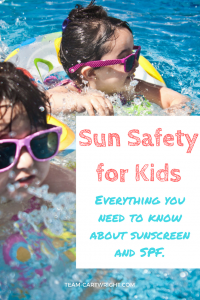
Summer is a great time to get outdoors with your kids. Don’t let the sun and sunburns hold you back! Stay safe out there.

Here are some more great posts for you!
